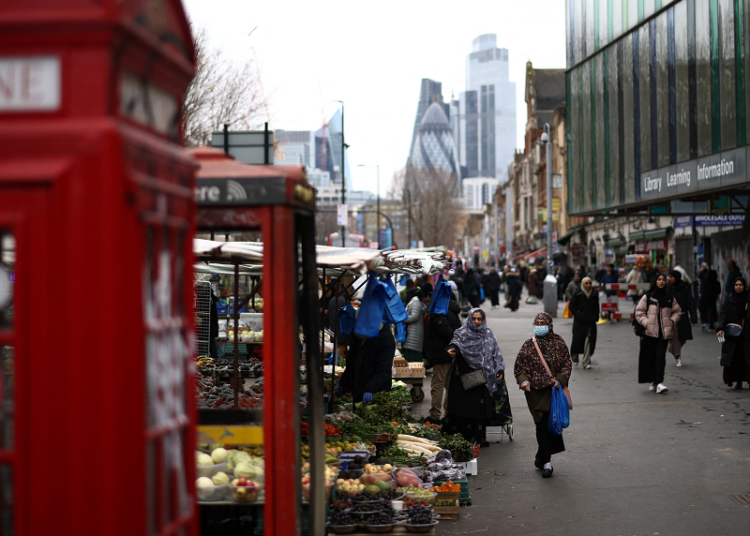LONDON – Britain’s economy grew sluggishly in early 2023, better than the shallow recession once expected, but an unexpectedly sharp drop in output in March underscored how fragile its recovery remains.
Gross domestic product (GDP) edged up 0.1% in the first three months of the year, official data showed on Friday, the same tepid pace as in the final quarter of 2022 and in line with economists’ forecast in a Reuters poll.
Output was 0.2% higher than a year earlier, the Office for National Statistics said.
But GDP in March alone dropped 0.3%, compared with poll forecasts for it to hold steady. While industrial output and construction grew, the much larger services sector dropped 0.4%, reflecting weak car sales and retail, hurt by unusually rainy weather and high inflation.
Widespread industrial action also weighed on economic activity in the first quarter, the statistics office said.
“With the key services side of the economy continuing to slow in the face of higher borrowing costs and rising prices, it still feels like we’re walking through treacle,” said Tom Stevenson, personal investing director at fund manager Fidelity International.
Britain’s inflation rate topped 10% in March – double the level in the United States and higher than the euro zone’s too – and on Thursday the Bank of England raised its main interest rate to 4.5%, the highest since 2008.
The jump in inflation largely reflects the ongoing impact of a surge in the cost of natural gas imports and foodstuffs last year after Russia’s invasion of Ukraine, which the BoE says has made Britain poorer.
The central bank forecasts the economy will grow 0.25% in 2023 as a whole – a weak expansion though an upgrade on its prediction earlier this year of a 0.5% contraction.
British GDP expanded at the same pace as the euro zone’s in the first quarter, but it has underperformed since the start of the COVID-19 pandemic – partly due to post-Brexit trade barriers and restrictions on hiring low-paid migrant workers.






Discussion about this post